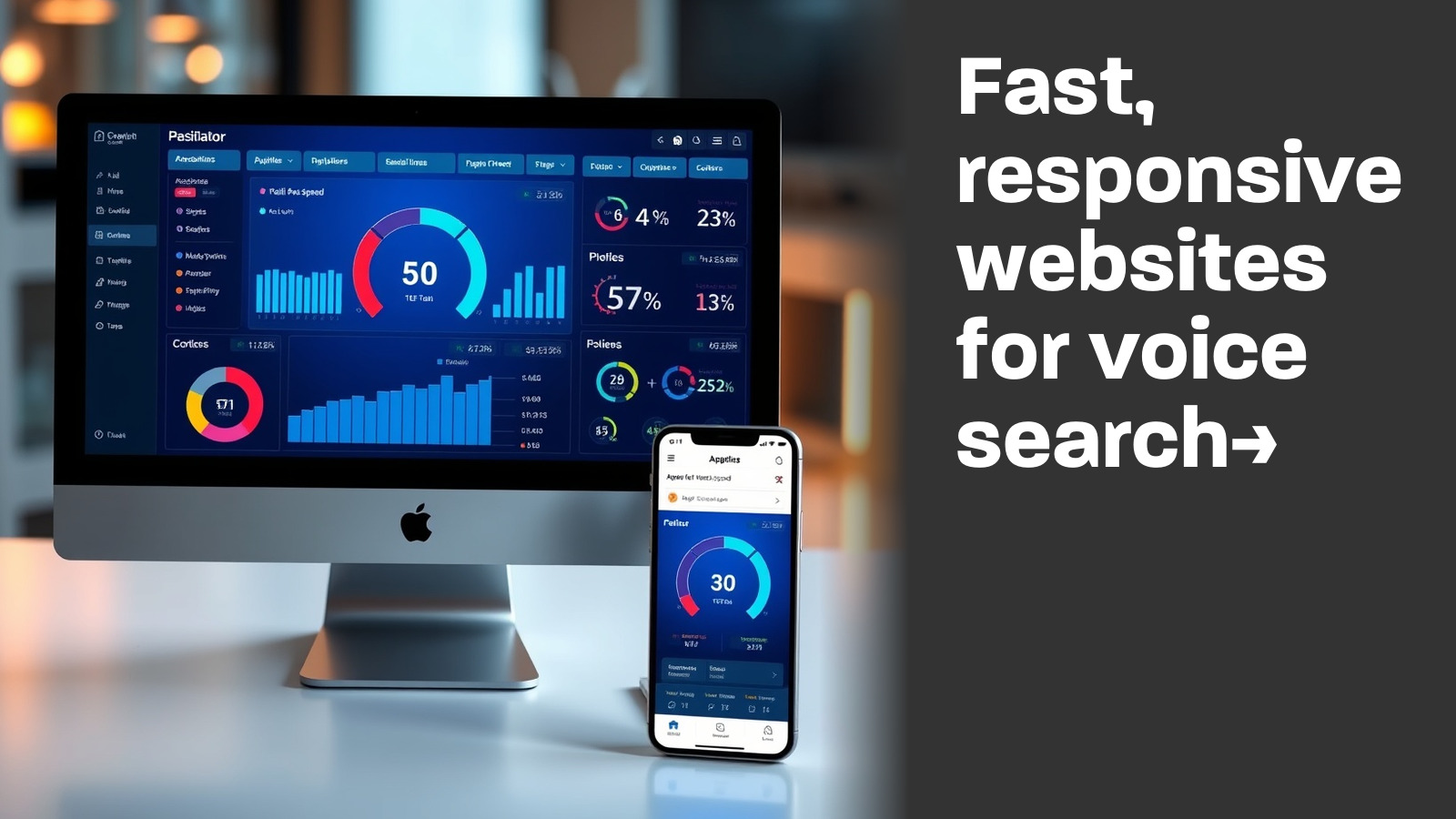Voice search is rapidly transforming the way users interact with digital platforms. As smart speakers and voice-activated devices become ubiquitous, traditional SEO strategies must evolve to accommodate conversational queries and natural language patterns. In this new era of digital discovery, companies need to adopt voice search optimization techniques that are aligned with modern user habits, ensuring their content is easily heard and understood. The transition to a voice-first world is not a passing trend—it is here to stay, and businesses must adapt to remain competitive. Traditional keyword stuffing is no longer effective; instead, it is essential to develop content that feels natural, conversational, and answers users’ specific questions. Marketers are now placing greater emphasis on content structure, local SEO, and user experience to capture voice-driven traffic. With this in mind, we present five essential strategies for voice search optimization that can help your business excel in a voice-first future.
1. Embrace Conversational Keywords and Natural Language
The foundation of voice search optimization lies in adopting conversational keywords. Unlike typed queries, voice searches are typically longer, more fluid, and often phrased as questions. It is vital to incorporate long-tail keywords that mimic everyday language. For instance, instead of targeting “digital marketing tips,” try structuring your content around questions like “What are the best digital marketing tips for small businesses?” By aligning your content with the natural speech patterns of your audience, you enhance its relevancy for voice search engines. Additionally, using question-based headings and FAQs can improve your chances of being selected for featured snippets, which frequently serve as the primary response for voice queries. Adapting to this conversational approach not only makes your content more accessible but also fosters a better connection with your audience.

2. Optimize for Local SEO and “Near Me” Queries
Local searches have become a defining feature of voice search, as many users ask their voice assistants for nearby recommendations and services. When individuals use phrases such as “near me” or request local directions, it is critical to ensure your business information is up to date. Optimizing your local SEO starts with maintaining an accurate Google Business Profile and consistent Name, Address, and Phone Number (NAP) data across all platforms. Moreover, incorporating geographic modifiers and localized keywords can drive higher visibility for voice queries. For example, instead of simply targeting “best coffee shop,” refine your strategy with “What is the best coffee shop near me?” to align more closely with natural speech. Local voice search optimization also benefits from customer reviews and ratings, which serve as key social proof for voice assistants. Businesses that invest in local optimization strategies gain a competitive edge, capturing high-intent traffic from users looking for immediate solutions in their vicinity. This approach is particularly important for small businesses and service providers aiming to improve foot traffic and local engagement.
Enhancing local SEO for voice search promotes trust and immediacy, ensuring that potential customers receive accurate and actionable information quickly. As voice search becomes an integral part of everyday discovery, businesses that prioritize local optimization are well positioned to attract both online and in-person clientele, thereby strengthening their overall market presence.

3. Enhance Website Speed and Mobile Responsiveness
Voice search is predominantly conducted on mobile devices, making website speed and mobile responsiveness critical factors in optimization. Users expect instantaneous results, and a slow-loading site not only diminishes user experience but also affects your search ranking. Modern optimization strategies must include technical improvements such as image compression, minified code, and robust hosting solutions to ensure fast load times. Mobile-first indexing by search engines reinforces the need for responsive design, where every element scales correctly on smartphones and tablets. When users ask voice assistants for information, the underlying website performance can determine the accuracy and relevance of the response. A well-optimized website that loads rapidly creates a seamless transition from query to response, leading to higher user satisfaction and better conversion rates.
Strategic use of tools like Google PageSpeed Insights can highlight areas needing improvement. By upgrading hosting solutions, implementing caching, and ensuring that interactive elements are mobile-friendly, businesses can reduce bounce rates and keep visitors engaged. In a voice-first world, where queries and commands are immediate, every second counts. Therefore, technical optimization must be seen as a fundamental pillar of voice search strategy, aligning user expectations with the digital performance of your site.

4. Leverage Structured Data and Featured Snippets
Structured data is a powerful tool in the realm of voice search optimization. By integrating schema markup into your website, you provide search engines with clear, organized information about your content, products, and services. This practice increases the likelihood of being featured in snippets, which are frequently used by voice assistants to deliver direct answers. Incorporating structured data can include marking up FAQs, product details, reviews, and local business information. When your content is well-structured, voice assistants can easily extract concise, accurate responses to user queries, thereby enhancing your visibility. Featured snippets, often referred to as “position zero,” are prime targets for voice search since they offer immediate, authoritative responses. Utilizing bullet points, numbered lists, and succinct paragraphs further boosts your chances of capturing these coveted positions.
Adopting these practices not only improves your search ranking but also aligns your content with the natural flow of user queries. As voice search matures, the role of structured data becomes increasingly significant. It allows your website to be understood in context, ensuring that the information provided is both comprehensive and easily accessible for voice-driven platforms. The strategic deployment of schema markup serves as a competitive advantage, enabling businesses to stand out in a crowded digital landscape where concise answers and high accuracy are paramount for voice search success.
5. Integrate AI-Driven Tools to Future-Proof Your Strategy
The future of voice search lies in the seamless blend of human insight with AI-driven technologies. As artificial intelligence and natural language processing continue to evolve, they are reshaping how search engines interpret and respond to voice queries. Integrating advanced tools such as AI-based content analysis, predictive keyword research, and conversational analytics can help your business stay ahead of curve. These technologies not only optimize your current content but also provide actionable insights into emerging trends. By leveraging AI, marketers can deepen their understanding of user behavior, refine keyword strategies, and continuously adjust to shifting search patterns. The ability to forecast changes in consumer inquiries through AI algorithms equips businesses with the agility to modify content in real time.
This forward-thinking approach ensures that your voice search optimization strategy is resilient and adaptive. Investing in tools that analyze conversational data and track performance metrics specific to voice queries can yield significant competitive advantages. As search engines become more sophisticated, incorporating AI will be essential in capturing high-intent voice traffic and providing users with accurate, timely responses. In conclusion, integrating AI-driven tools is not merely a technical upgrade—it is a strategic imperative that future-proofs your digital presence. By adopting this holistic strategy, you can ensure that your business remains visible, relevant, and engaging in an ever-changing voice-first landscape.
Overall, these five essential strategies—embracing conversational keywords, optimizing for local searches, enhancing website speed, leveraging structured data, and integrating AI—form the backbone of a robust voice search optimization plan. As digital discovery continues to shift towards a voice-driven experience, adapting your SEO strategy accordingly will help your business not only remain competitive but also excel in delivering superior user experiences.
